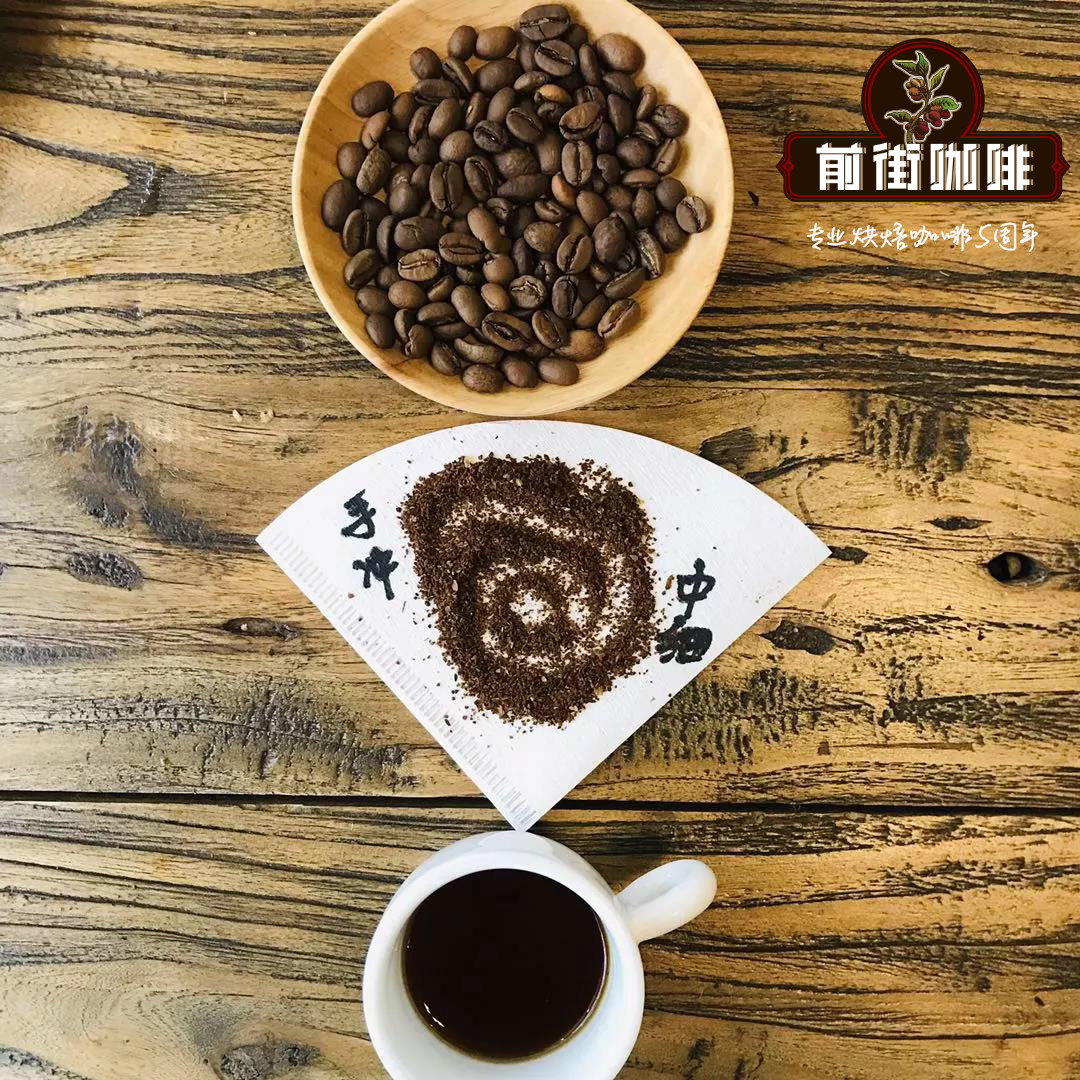Coffee beans at La Tisa Manor in Guatemala taste well-balanced and full-bodied with chocolate flavor.

Professional coffee knowledge exchange more coffee bean information please follow the coffee workshop (Wechat official account cafe_style)
The coffee beans of La Tisa Manor in Guatemala have a balanced taste, mellow thickness and chocolate flavor.
Guatemalan coffee, mainly bourbon, Tibica, Kaduai and Kaddura, can be called the most perfect coffee in the world. Guatemalan coffee has a strong aroma, even if you don't drink it, just smelling it is a pleasure. Some people say that drinking a cup of pure Guatemalan coffee will tell the story of Indians in the unique smoky taste of a cup of Guatemalan coffee. Guatemala, which mainly grows and exports coffee, has many well-known producing areas. Nowadays, Guatemalan coffee is well known by many coffee lovers.
The Republic of Guatemala (Spanish: Rep ú blica de Guatemala), translated as Guatemala, is a country of Central America, located in the south of the North American continent. It borders the Pacific Ocean to the west, the Caribbean Sea to the east, Mexico to the north, Belize to the northeast, and Honduras and El Salvador to the southeast. Guatemala produces about 3.5 million bags of coffee each year, and raw coffee beans account for 40 per cent of the country's total agricultural exports. This country, which mainly grows and exports coffee, has fertile soil suitable for coffee trees, suitable climate, abundant water resources and high altitude planting height. There are also many well-known producing areas in its territory, such as Antigua, Vivette Nanguo, Koban, Alcatel Nanguo, Attland, New Oriental, St. Marks and so on. Vivette Nango and Antigua are best known to coffee lovers.
Located in the tropics, there are many volcanoes in the territory, the northern and eastern coastal plains have a tropical rain forest climate, and the southern mountains have a subtropical climate. The year is divided into two dry and wet seasons, with the wet season from May to October and the dry season from November to April of the following year. The annual precipitation is 2000-3000 mm in the northeast and 500-1000 mm in the south. The forest accounts for half of the country's area and is the location of the best latitude for coffee production. Because coffee is an important cash crop in the area, it has given rise to a rich coffee culture. People drink coffee every day. Most people have a cup of coffee for lunch.
Coffee cultivation at La Tisha Manor on the Farahan Plateau began in 1920. The estate is planted with bourbon species, Kaddura, Pacamara, etc., with a variety of varieties. Of the 205acres (4046.8 square meters per acre) of the farm, 173acres are used to grow coffee. Another 32 acres of native forest is home to a variety of local wild species. There are several natural springs on the farm that provide adequate and high-quality irrigation for coffee plantations during the dry season, and they are also the power source for coffee processing plants (water for water treatment).
Country: Guatemala
Grade: SHB
Production area: Fraijanes,Guatemala City
Altitude: 1675 m
Harvest time: October to February of the following year
Treatment: washing
Variety: bourbon, Kaddura
Processing plant: Ladisha Manor
Flavor: black tea, flower scent, rich caramel feeling
Roasting Analysis of Coffee beans in Guatemala
Latisha is a combination of two varieties of raw beans with different densities, so when raw beans with different densities are mixed, the release temperature is set on the basis of bourbon seeds, and when steaming, please use Kaddura seeds as the standard, that is to say, newly produced seasonal beans plus high density (more than two kinds of raw beans are mixed for baking. Take the raw beans with the highest density as the basis for steaming (it will be preheated by low heat in the first minute).
Yangjia 800N, raw bean 550g, specific operation:
The furnace temperature is 200 degrees Celsius into the pot, the throttle is set to stew for 1 minute, then adjust the firepower to 160C, the throttle remains unchanged, the furnace temperature is adjusted to 165C, bake to 540 ", the temperature is 153.9 degrees, the bean surface turns yellow, the smell of grass disappears completely, the dehydration is completed, and the throttle tune is 4.
In the 9th minute, ugly wrinkles and black markings appear on the bean surface, and the smell of toast obviously changes to the smell of coffee, which can be defined as a prelude to an explosion. at this time, listen clearly to the sound of an explosion point, to 9: 22 "start an explosion, adjust the firepower to 80 degrees, the throttle is fully open 5 degrees (the firepower should be very careful, not so small as to be free of cracking sound) 60 degrees, 197.2 degrees when the pot.
The taste of cup test
Features: balanced taste, mellow thickness, chocolate flavor
END
Important Notice :
前街咖啡 FrontStreet Coffee has moved to new addredd:
FrontStreet Coffee Address: 315,Donghua East Road,GuangZhou
Tel:020 38364473
- Prev

Ethiopian Limu coffee beans give you 3 reasons to love Limu coffee
Professional coffee knowledge exchange more coffee bean information please follow coffee workshop (Wechat official account cafe_style) Ethiopian Limu coffee beans when you think of Ethiopia, it is usually Yirgacheffe and Sidamo to attract everyone's attention, but I will let you know one of the best secrets of the coffee industry-quality Limu provides more balanced and refined
- Next

Anti melon Huashen coffee has fragrance, hazelnut chocolate, tea aroma, Huashen coffee bean name origin
Professional coffee knowledge exchange more coffee bean information Please follow the coffee workshop (Wechat official account cafe_style) heard the "Flower God" coffee beans for the first time, felt very curious and amazed. The name is so good that it is conceivable that the process of drinking must be a romantic encounter with a sea of beautiful flowers. The visual imagination derived from the name has fascinated people, why not look forward to the taste
Related
- Does Rose Summer choose Blue, Green or Red? Detailed explanation of Rose Summer Coffee plots and Classification in Panamanian Jade Manor
- What is the difference between the origin, producing area, processing plant, cooperative and manor of coffee beans?
- How fine does the espresso powder fit? how to grind the espresso?
- Sca coffee roasting degree color card coffee roasting degree 8 roasting color values what do you mean?
- The practice of lattes: how to make lattes at home
- Introduction to Indonesian Fine Coffee beans-- Java Coffee producing area of Indonesian Arabica Coffee
- How much will the flavor of light and medium roasted rose summer be expressed? What baking level is rose summer suitable for?
- Introduction to the characteristics of washing, sun-drying or wet-planing coffee commonly used in Mantenin, Indonesia
- Price characteristics of Arabica Coffee Bean Starbucks introduction to Manning Coffee Bean Taste producing area Variety Manor
- What is the authentic Yega flavor? What are the flavor characteristics of the really excellent Yejasuffi coffee beans?

